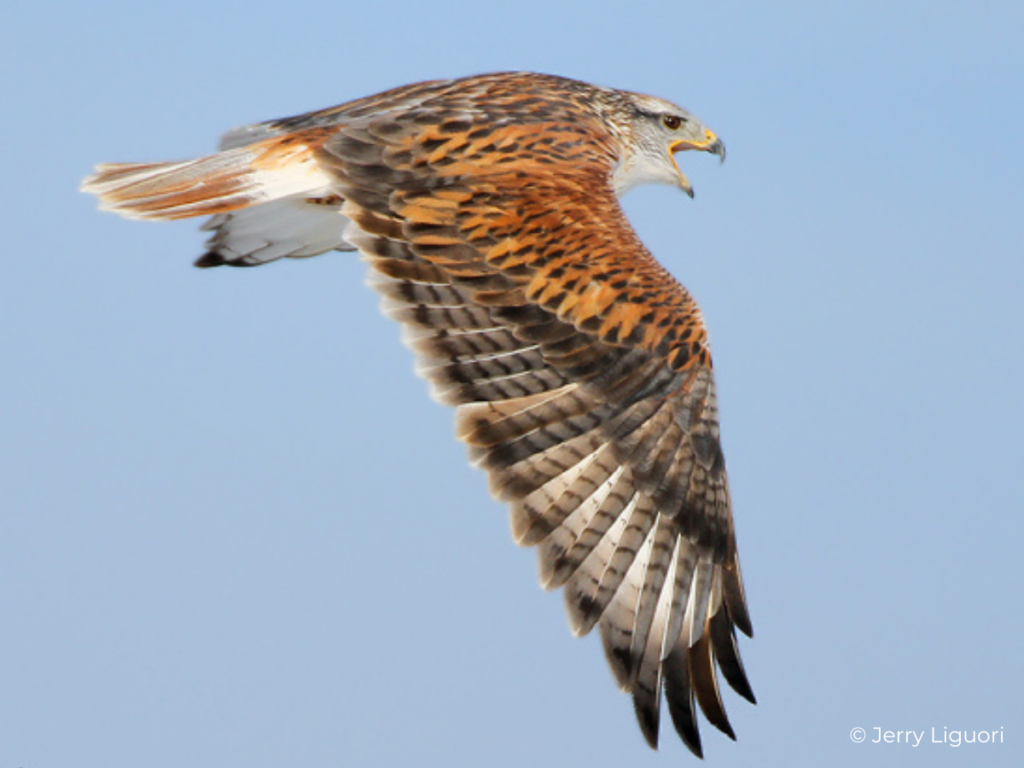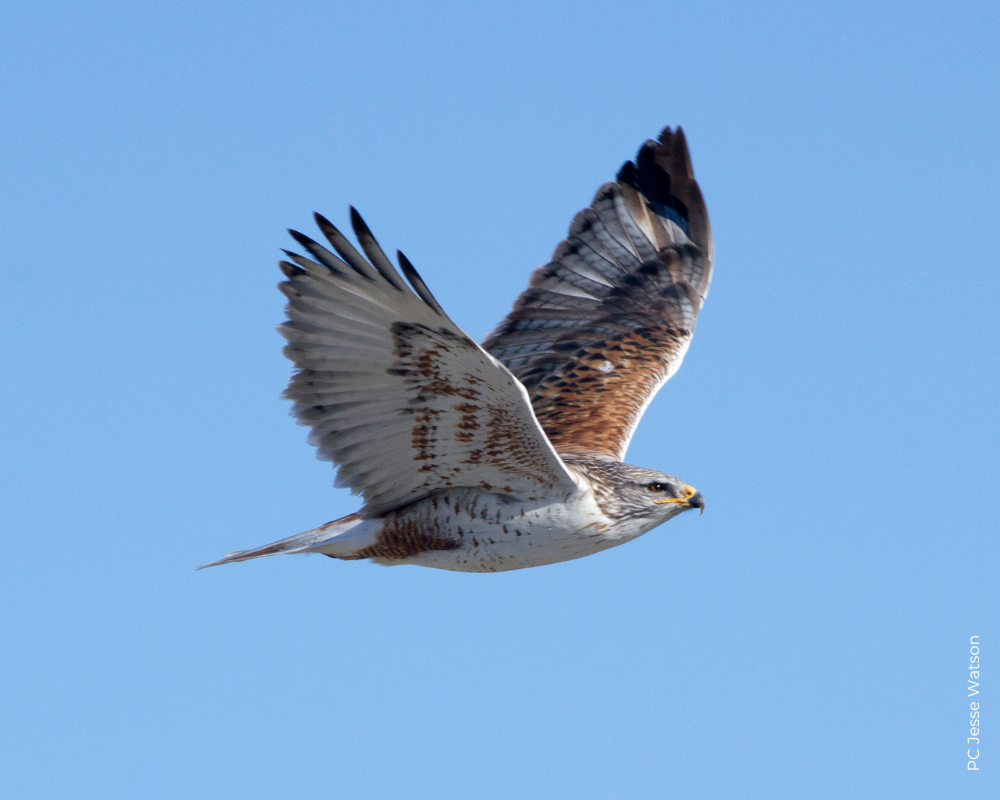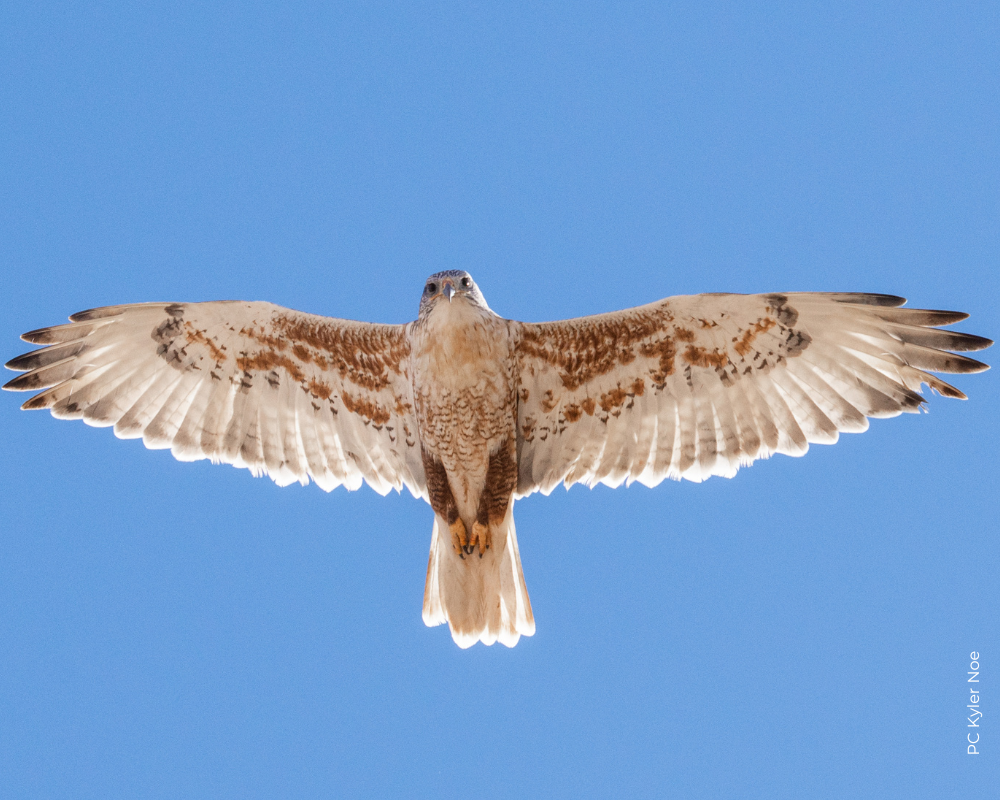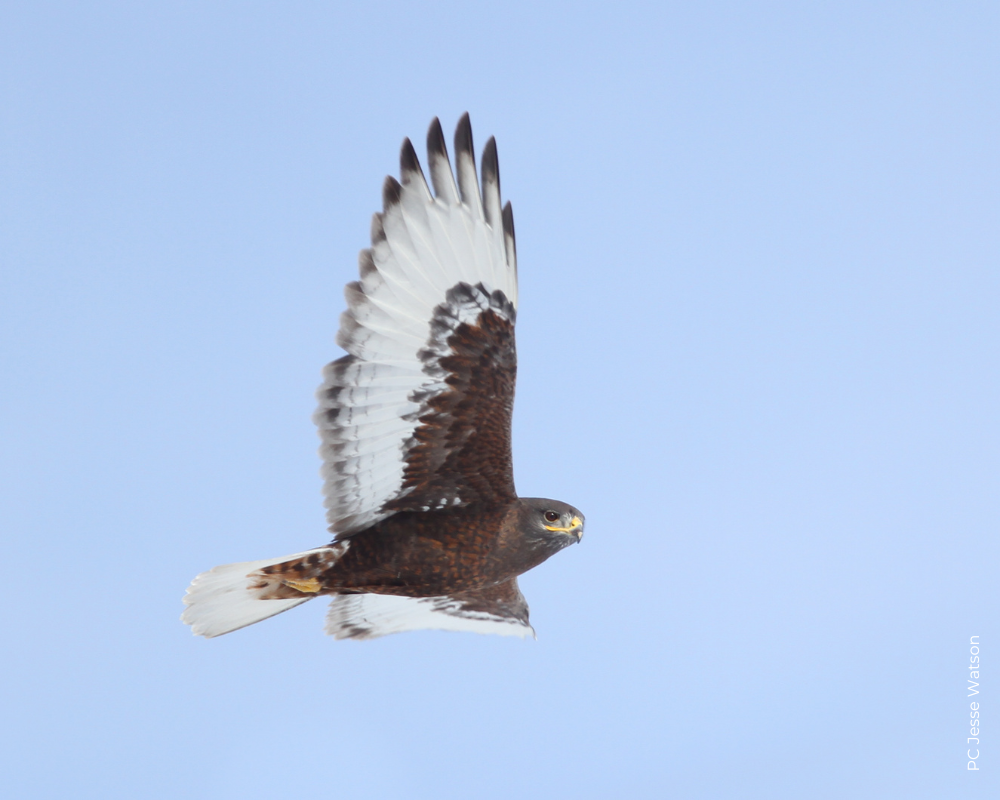Overview
Ferruginous Hawks are birds of the West and the northern Great Plains, residing in open country. They favor vast expanses of Sagebrush prairie and grasslands in summer, but many move to agricultural or tilled areas in winter. They nest in large trees, on low buttes, power poles, and even sometimes on the ground in remote areas. In summer, they feed mainly on prairie dogs, ground squirrels, and snakes. When perched on power poles, fence posts, and on the ground (especially hilltops) scanning for prey, they appear as a ‘hulking’ figure. They are unmistakably large and bulky; being on average the largest of the North American buteos. However, the size difference between male and female (which are larger) can be great, with some females over twice the weight of their mate.
Ferruginous Hawks are less common than Red-tailed Hawk and Swainson’s Hawks but highly visible in winter and summer, especially where ground squirrel, prairie dog, or mouse populations are high. They are versatile hunters, adept at stooping from high in the sky, surprising prey in low level direct flight, and also hover and kite in the wind equally as well (if not better) as Red-tailed, Rough-legged, and Swainson’s Hawks. In some wintering areas, Ferruginous Hawks roost in groups of up to 100 birds, mixing in with Rough-legged and Red-tailed Hawks. Their call is a quavering, descending, nasal “kreeeeer.”




